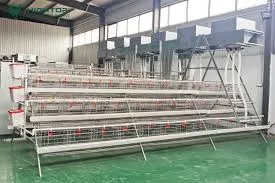Effective Strategies for Using Evaporative Cooling Pads in Greenhouse Climate Management
Jul . 27, 2024 16:47 Back to list
Effective Strategies for Using Evaporative Cooling Pads in Greenhouse Climate Management
Understanding Greenhouse Evaporative Cooling Pads
As the global climate continues to shift, maintaining optimal growing conditions in greenhouses has become increasingly important for agricultural success. One effective method to regulate temperature and humidity in these enclosed environments is through the use of evaporative cooling pads. This innovative solution not only enhances plant health but also promotes energy efficiency and sustainability.
What Are Evaporative Cooling Pads?
Evaporative cooling pads are specially designed panels made from absorbent materials, such as cellulose or synthetic fibers, which facilitate the process of evaporative cooling. These pads are usually installed on the walls or roof of the greenhouse and work in conjunction with ventilation systems. When water moves through the pads, it is absorbed by the material. As warm air passes through the saturated pads, the moisture evaporates, absorbing heat from the air and lowering the temperature within the greenhouse.
The Science Behind Evaporative Cooling
Evaporative cooling operates on a simple yet effective principle when water evaporates, it absorbs heat from its surroundings. This process reduces the air temperature, which is particularly beneficial in hot climates where maintaining a stable temperature is crucial for plant growth. The efficiency of evaporative cooling increases with lower humidity levels and higher temperatures, making it an ideal solution for many regions across the globe.
Benefits of Using Evaporative Cooling Pads
greenhouse evaporative cooling pads

1. Improved Plant Health Consistently regulated temperatures and humidity levels create an ideal environment for plants. This leads to healthier crops, improved yield, and reduced stress on the plants, which can result in better quality produce.
2. Energy Efficiency Compared to traditional air conditioning systems, evaporative cooling pads consume significantly less energy. They require only a small amount of electricity to operate fans that circulate air, making them a cost-effective solution for temperature control.
3. Sustainability Evaporative cooling is a natural process that relies on water rather than chemical refrigerants, making it an environmentally friendly option. The use of these pads supports sustainable agriculture by minimizing greenhouse gas emissions and reducing the carbon footprint associated with cooling systems.
4. Ease of Use Evaporative cooling pads are relatively easy to install and maintain. They are designed to be durable and can last several seasons with proper care. Routine maintenance, such as cleaning and checking for wear, ensures optimal performance over time.
5. Versatility These cooling systems can be utilized in various types of greenhouses, from small hobbyist setups to large commercial operations. They can also be combined with other cooling methods to create a comprehensive climate control strategy.
Conclusion
In conclusion, evaporative cooling pads represent a revolutionary solution for greenhouse climate management. By leveraging the natural principles of evaporative cooling, these pads provide significant benefits, including enhanced plant health, energy efficiency, and sustainability. As the demand for efficient agricultural practices continues to grow, the use of technologies like evaporative cooling pads will play a crucial role in ensuring the success of modern farming. Adopting such methods will not only optimize crop production but also contribute to a more sustainable future for agriculture.
-
Hot Sale 24 & 18 Door Rabbit Cages - Premium Breeding Solutions
NewsJul.25,2025
-
Automatic Feeding Line System Pan Feeder Nipple Drinker - Anping County Yize Metal Products Co., Ltd.
NewsJul.21,2025
-
Automatic Feeding Line System Pan Feeder Nipple Drinker - Anping County Yize Metal Products Co., Ltd.
NewsJul.21,2025
-
Automatic Feeding Line System - Anping Yize | Precision & Nipple
NewsJul.21,2025
-
Automatic Feeding Line System - Anping Yize | Precision & Nipple
NewsJul.21,2025
-
Automatic Feeding Line System-Anping County Yize Metal Products Co., Ltd.|Efficient Feed Distribution&Customized Animal Farming Solutions
NewsJul.21,2025






